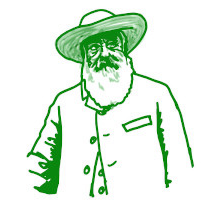Project "The Interpretation of Painting by Binary"

The Effect of Cataracts on Late Years Claude Monet.
Artist: Kenji Kojima, 2022
|
Show: Japanese / 日本語
Hide: Japanese / 日本語
人類史に現れたすべてのメディア・データは、現在バイナリー (0,1) に変換して記録されます。 アートマテリアルのバイナリーは、異なるメディア間の互換が可能です。 このプロジェクトは、視覚に現れる絵画をバイナリ分析して、12音階として表現します。COVID-19以降、ビデオ作品制作の撮影を控えていました。しばらくして古典絵画のパブリック ドメインのデジタル画像を、ネットで入手できることに気付きました。これは急速に発展するデジタルの世界で、アナログ美術史を振り返る良い機会となりました。美術館は物質で作られた芸術作品を、近い将来収納・保管できなくなるでしょう。おそらく私たちは、物理的な作品を扱う最後の世代になるかもしれません。 バイナリーは物理的に空であり、最も基本的なデジタルアートのマテリアルです。私たちはまだ現実空間の手の触覚を覚えています。視覚と聴覚は、五感のそれぞれの情報が重なっています。 外の世界から受ける印象は、あなたの心の中で音楽になり、音楽をキャンバスに表現すると絵画が生まれます。このアート・プロジェクトは絵画から音楽を発掘しています。私はこのプロジェクトのために、コンピューター・アルゴリズムが人間の感性を再現できるかどうかの、実験的なアート・アプリケーションを開発しました。 カリフォルニア大学の最近の研究では、私たちの脳はバラバラに変化する視覚情報をタイムラインにまとめることで、環境に対する安定した認識を作り出すということです。 私がプログラムしたアルゴリズムは、タイムライン上のバラバラな色のグリッド データをバイナリでランダムに収集し、それらを音符に変換して MIDI ピアノを演奏します。 Hide: Japanese / 日本語 All media data in human history are now converted and recorded as binary (0,1). Art material binary creates media cross sensibilities. The project is the interpretation of classic paintings as 12-tone music by binary analysis. After COVID-19, I was refraining from going out to shoot a video for my artwork. I noticed I could get public-domain digital images of classic paintings on the net. It was a good chance to reflect on analog art history in the rapidly developed digital world. Museums will not be able to store too many physical artworks shortly. Probably we will be the last generation of handling substance art. The binary is physically empty and the most fundamental digital art material. We still have remembered the tactile sense of the hand in actual space. I think seeing and hearing overlap with each information of the senses. The impression received from the outside world becomes music in your mind. When you express the music on a canvas, a painting is born. This artwork project is the excavation that digs music from paintings. I developed an experimental art application on whether computer algorithms can reproduce human sensibility. A recent study at the University of California that our brain creates a stable perception of the environment by putting together disjointed changing visual information on a timeline. The algorithm I programmed collected disjointed grid data of colors on a timeline randomly by binary and converted them to musical notes and played midi piano. Show: Kenji Kojima's Biography
Hide: Kenji Kojima's Biography
Kenji Kojima is a digital artist. He has been experimenting with the relationships between perception and cognition, technology, music, and visual art since the early 1990s. Primarily he has interested in the relationship between seeing and hearing. He was born in Japan and moved to New York in 1980. He painted egg tempera paintings that were medieval art materials and techniques for the first 10 years in New York City. His paintings were collected by Citibank, Hess Oil, and others. The personal computer improved rapidly during the 1980s. He felt more comfortable with computer art than paintings. He switched His artwork to digital in the early 1990s. His early digital works were archived in the New Museum - Rhizome, New York. He developed the computer software "RGB MusicLab" in 2007 and created an interdisciplinary work exploring the relationship between images and music. He programmed the software “Luce” for the “Techno Synesthesia” project in 2014. His digital art series was exhibited in New York, at media art festivals worldwide, including Europe, Brazil, and Asia, and the online exhibitions by ACM SIGGRAPH and FILE, etc. Anti-nuclear artwork “Composition FUKUSHIMA 2011” was collected in CTF Collective Trauma Film Collections / ArtvideoKoeln in 2015. He started the new series "The Musical Interpretation of Paintings and Photographs" which creates music from image data in 2021. LiveCode programmer. https://kenjikojima.com/ Hide: Kenji Kojima's Biography History of Media Festival Participation: April 20 - September 15, 2023: "The Elastic Mind" Broward College, Weston, FL July 4 - August 28, 2023: FILE "Electronic Language International Festival", São Paulo, Brazil |







